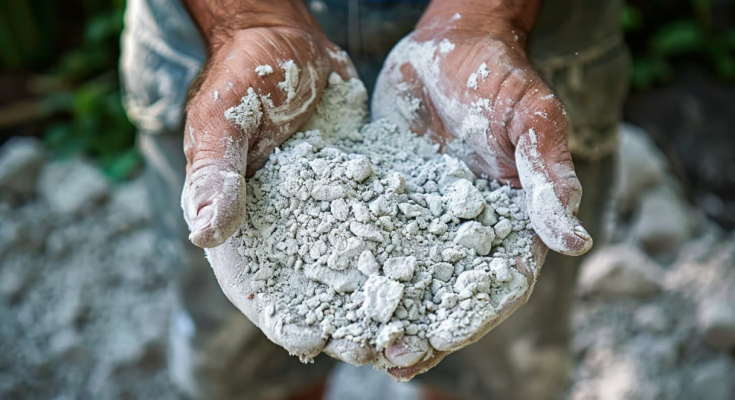Growing healthy tomatoes, cucumbers, and other vegetables can be enhanced by using natural, white-colored fertilizers. These include baking soda, crushed eggshells, bone meal, dolomite lime, and gypsum. Here’s a detailed guide on how to prepare and use these fertilizers, along with their benefits.

1. Bone Meal
Preparation and Use:
- Purchase bone meal from a gardening store or online.
- Follow the package instructions for the correct amount to use. Generally, you can mix 1-2 tablespoons into the soil at the base of each plant.
- Apply bone meal at the time of planting and reapply mid-season if necessary.
Benefits:
- Phosphorus and Calcium: Bone meal provides phosphorus, which is crucial for root development and flowering, and calcium, which prevents blossom end rot.
- Long-Lasting: It breaks down slowly, providing a steady supply of nutrients over time.

2. Crushed Eggshells
Preparation and Use:
- Collect eggshells and rinse them to remove any remaining egg residue.
- Allow them to dry completely.
- Crush the eggshells into small pieces or grind them into a fine powder using a mortar and pestle or a coffee grinder.
- Sprinkle the crushed eggshells or powder around the base of your plants and gently work it into the soil.
Benefits:
- Calcium Source: Eggshells are rich in calcium, which is essential for preventing blossom end rot in tomatoes and cucumbers.
- Soil Structure Improvement: Adding eggshells improves soil structure and aeration over time.

3. Baking Soda
Preparation and Use:
- Mix 1 tablespoon of baking soda with 1 gallon of water.
- Stir well until the baking soda is completely dissolved.
- Use a spray bottle to apply the solution to the leaves and soil around your tomato and cucumber plants.
Benefits:
- Fungal Control: Baking soda helps combat fungal diseases like powdery mildew and early blight by altering the pH on the plant’s surface, making it less hospitable to fungi.
- pH Balance: It can help to slightly raise the pH of acidic soils, creating a more balanced environment for vegetable growth.

4. Dolomite Lime
Preparation and Use:
- Purchase dolomite lime in powdered form.
- Before planting, spread a layer of dolomite lime over the soil and mix it in well.
- Use 1-2 pounds per 100 square feet, or follow the package instructions.
Benefits:
- pH Adjustment: Dolomite lime helps to neutralize acidic soils, creating a better growing environment for vegetables.
- Magnesium and Calcium: It supplies magnesium, which is essential for photosynthesis, and calcium, which supports strong cell walls.
5. Gypsum
Preparation and Use:
- Purchase gypsum in powdered form.
- Spread the gypsum evenly over the soil surface and work it into the top 6 inches of soil.
- Use about 2-3 pounds per 100 square feet, or follow the package instructions.
Benefits:
- Calcium and Sulfur: Gypsum provides calcium, which prevents blossom end rot, and sulfur, which is necessary for protein synthesis in plants.
- Soil Structure: Gypsum improves soil structure by breaking up compacted soil and enhancing water infiltration and root penetration.

Additional Tip for Healthy Vegetable Growth
Epsom Salt: For an added boost, consider using Epsom salt (magnesium sulfate). Dissolve 1 tablespoon of Epsom salt in a gallon of water and apply it to the soil once a month. Epsom salt provides magnesium, which is crucial for photosynthesis and overall plant health.💚
Conclusion
Using natural, white fertilizers like baking soda, crushed eggshells, bone meal, dolomite lime, and gypsum can significantly enhance the growth and health of your tomatoes, cucumbers, and other vegetables. These fertilizers provide essential nutrients, improve soil structure, and help control diseases. By incorporating these into your gardening routine, you can enjoy a bountiful and healthy harvest. Happy gardening!



